PMax (Performance Max) Google Ads offers a new way of running ads, using Google’s extensive data and machine learning to optimize ad performance across all its channels. This means you can reach your audience no matter where they are on the web: from YouTube to Gmail to Maps and beyond.
PMax offers a more dynamic solution by integrating across all of Google’s advertising channels, including YouTube, Google Display Network, Google Maps, and even Gmail, in addition to the standard Search network.
Let’s look at how PMax can be a winning strategy for your PPC and even look at a real-life case study we conducted where we were able to drive conversions up by 53% for a leading digital twin camera company using PMax campaigns.
The Initial State of PPC Campaigns
Traditionally, PPC campaigns, particularly through platforms like Google Shopping, were fairly straightforward. Marketers would set up their ads, targeting specific keywords and demographics, aiming to match their products with users actively searching for related items.
This approach, while effective for capturing high-intent traffic, often missed broader opportunities across the digital landscape.
Google Shopping campaigns focused primarily on users who were at the later stages of the buying process, displaying ads directly in search results and product listing ads. This method relies heavily on manual setup for targeting and bidding strategies, requiring constant oversight and adjustment to stay competitive and relevant.

Transitioning to Performance Max
The shift to Performance Max (PMax) represented a significant departure from these traditional methods. As marketers, the decision to adopt PMax was driven by the need to leverage newer, more sophisticated tools that could enhance ad reach and effectiveness.
The core appeal of PMax lies in its ability to use Google’s machine learning technology to automatically optimize ad placements and bidding in real time. This not only saves marketers a considerable amount of time but also potentially increases ad performance by ensuring ads are shown to the right users at the right time, across the entire Google ecosystem.
Making Waves in Digital Advertising With PMax
This transition to PMax marks a shift in digital advertising towards intelligent automation and data-driven decision-making.
With PMax, the focus shifts from manually steering campaigns based on past experiences and assumed user behavior to letting advanced algorithms predict and react to likely customer actions.
This means that PMax campaigns can continuously learn and adapt, improving their efficiency and effectiveness over time, as we can see with Target’s use of PMax Campaigns:
The retail giant used Performance Max campaigns to promote holiday deals by setting up custom intent audiences. This allowed them to target shoppers actively searching for holiday deals and used dynamic ads to showcase different products based on the individual’s search history and interests.
The result? A 25% increase in sales and a 3x return on ad spend.
The benefits of such a system are nothing short of incredible.
Firstly, broader reach means that your ads are not just limited to one type of user or a single point in their customer journey. Instead, PMax expands your visibility across multiple touchpoints, increasing the chances of catching the consumer’s eye at various stages of their decision-making process.
Secondly, automated optimization frees up resources, allowing marketers to focus on creative and strategic initiatives rather than the minutiae of bid adjustments and keyword management.
Lastly, the diverse ad formats available within PMax — from video to high-impact visuals on the Display Network — allow for creative marketing strategies that engage users in various ways, potentially leading to higher conversion rates and improved ROI.
Take Inflow, another marketing agency that switched one of its clients to PMax.
Their case study shows that PMax outperformed Standard Shopping campaigns by quite a bit, as we can see in their comparisons here:
From the first quarter of 2022 (using Standard Shopping) to the first quarter of 2023 (using PMax), their client saw a 76.3% increase in ad revenue and a 44.1% increase in transactions.
Let’s look at one of our case studies to better understand the impact PMax has on PPC.
Case Study: Improved Conversions by 53%
The Problem: Challenges With Standard Shopping Campaigns
Here’s a situation faced by a leading digital twin-camera company that specializes in creating detailed 3D models of physical spaces for various applications.
Initially, their advertising efforts were rooted in traditional Google Shopping campaigns. While these campaigns drove decent traffic and conversions from users with high purchase intent, the company faced significant limitations:
- Limited Reach: Their ads primarily appeared to users who were actively searching for related products, missing a broader audience who might be interested in their tech but hadn’t specifically searched for it.
- Manual Management: The campaigns required constant tweaking and management — from adjusting bids to refining target keywords. This manual oversight was resource-intensive and not always efficient.
- Lack of Engagement: The standard shopping ads were typically plain and informational, which didn’t do justice to the high-tech nature of their products. They struggled to convey the full value and potential applications of their technology, leading to lower engagement levels than desired.
The Goals For Performance Max
Recognizing these challenges, we helped the company pivot to Google’s Performance Max campaigns as part of a strategic move to revamp their digital marketing efforts.
The goals for adopting PMax were clear and ambitious:
- Enhanced Online Visibility: By leveraging PMax’s capability to place ads across Google’s entire suite of platforms, we aimed to increase company visibility and reach a broader audience.
- Greater Engagement: With PMax’s diverse ad formats, including video and interactive displays, the company saw an opportunity to better showcase its products. The visual and engaging nature of these new formats meant they could more effectively communicate the unique benefits of their cameras and software, enticing a wider array of customers.
- Automated Optimization: The shift also meant embracing the automated, data-driven capabilities of PMax. We were able to boost the efficiency and effectiveness of the company’s ad spend.
Transitioning to PMax helped solve the inherent problems with standard shopping campaigns and set a new standard for engaging with existing and potential customers online.
We can see the jump in conversions here.
Here’s what this looked like:

It’s worth noting that October was the month of the migration to PMax, so keep that in mind when looking at this data.

Neat, right?
Okay, But What Does This Look Like?
The shift to Performance Max (PMax) brought about tangible changes in the advertising strategy and results for the client.
Let’s look at the detailed outcomes and examine each metric to understand the overall impact and effectiveness of PMax on the company’s marketing efforts.
Increased Costs and Their Rationale
Initially, the transition to PMax was accompanied by an increase in advertising costs—up by 148.04%.
While this might seem steep, it’s essential to understand the context behind these numbers. The higher expenditure was largely due to the broader reach and enhanced targeting capabilities offered by PMax.
By expanding the ad presence across multiple Google platforms and utilizing more engaging ad formats, the company was not only reaching a larger audience but also investing in creating more impactful, high-quality ads in turn, yield higher long-term returns.
Surge in Impressions and Clicks
One of the most immediate effects of adopting PMax was a significant surge in impressions and clicks—increasing by 202.82% and 202.95%, respectively.
This boost in visibility and engagement metrics is crucial as it indicates a successful expansion of the company’s reach across multiple digital touchpoints.
Decreased Average CPC
Despite the overall increase in spending, the average cost-per-click (CPC) saw a decline of 18.12%. This is HUGE in highlighting the efficiency of PMax’s automated bid optimization; it intelligently adjusts bids across channels and ad formats to get the best possible price per engagement.
Enhanced Conversion Metrics
The transition to PMax also positively impacted conversion-related metrics.
There was a noteworthy improvement in:
- Conversion value (+36.06%)
- Click-through rates (CTR)
- Add-to-carts (+67.63%)
- Begin checkouts (+58.09%)
- And overall purchase conversions for hardware (+53.65%)
Breaking Down The Numbers
CTR and Conversion Value: The increase in CTR suggests that the ads were more relevant and engaging to the audience, which in turn led to higher conversion value.
Add to Carts and Begin Checkouts: The significant jumps in these preliminary conversion actions indicate a stronger intent to purchase among the audience reached.
All Purchases: The ultimate goal of any campaign is to drive sales, and a 53.65% increase in conversion values for purchases demonstrates the success of the PMax strategy in achieving this.
Let’s take a step back and look at the journey from start to finish:

It’s… beautiful.
So, are you ready to get with the times?
For marketers aiming to revolutionize their advertising results and truly connect with their audience across all stages of their online journey, PMax offers a promising pathway. It’s time to rethink, retool, and reinvigorate your advertising strategies to harness the full potential of new strategies like PMax.
Reach out to the PPC marketing experts here at Disruptive Advertising and let’s polish up your marketing strategies with PMax campaigns!


















